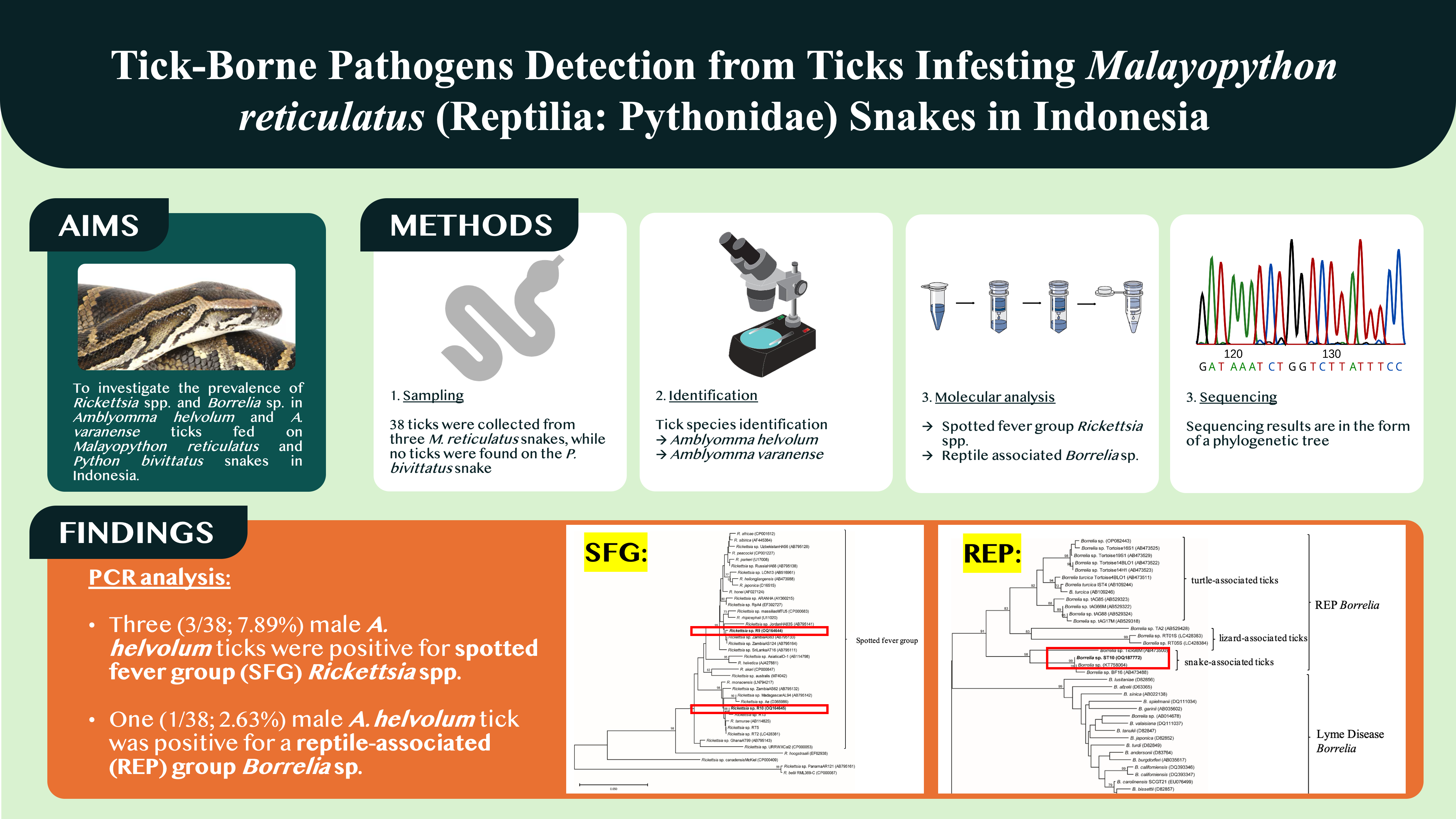GENETIC VARIATION OF WILD Musa acuminata COLLA FROM INDONESIA
Downloads
Indonesia is the center of origin and diversity of Musa acuminata Colla, one of the progenitors of cultivated bananas today. However, the genetic variation of wild M. acuminata has not been studied extensively, thus this study aimed to assess the genetic variation of the Indonesian wild M. acuminata based on 10 RAPD (Random Amplified Polymorphic DNA) and 10 ISSR (Inter Simple Sequence Repeats) markers. The genetic properties of 17 populations of wild M. acuminata were analyzed by Popgene 1.32 based on Nei’s unbiased measures of genetic identity and genetic distance. Of the 443 DNA bands produced, 425 (95.94%) were polymorphic. Cluster analysis of the combined data of RAPD and ISSR produced a dendrogram which separated the population of M. acuminata (A genome) from M. balbisiana (B genome), but not from M. schizocarpa (S genome). Nei’s genetic distance of the 17 populations of wild M. acuminata ranged from 0.3676 to 0.1634. The highest genetic distance was observed between M. acuminata var rutilifes (from East Java) and M. acuminata var sumatrana (from West Sumatra). The percentages of polymorphic loci among the 17 populations of M. acuminata ranged from 9.93% to 39.73%. Nei’s gene diversity (h) ranged from 0.041 to 0.1418. M. acuminata var malaccensis population was the most diverse among the researched 17 M. acuminata. The high level of genetic diversity of the wild M. acuminata from Indonesia emphasizes the need for conservation and preservation of the natural population and its use in the banana breeding program.
Downloads
Authors who publish with this journal agree with the following terms:
- Authors retain copyright and grant the journal right of first publication, with the work 1 year after publication simultaneously licensed under a Creative Commons attribution-noncommerical-noderivates 4.0 International License that allows others to share, copy and redistribute the work in any medium or format, but only where the use is for non-commercial purposes and an acknowledgement of the work's authorship and initial publication in this journal is mentioned.
- Authors are able to enter into separate, additional contractual arrangements for the non-exclusive distribution of the journal's published version of the work (e.g., post it to an institutional repository or publish it in a book), with an acknowledgement of its initial publication in this journal.
- Authors are permitted and encouraged to post their work online (e.g., in institutional repositories or on their website) prior to and during the submission process, as it can lead to productive exchanges, as well as earlier and greater citation of published work (See The Effect of Open Access).




























